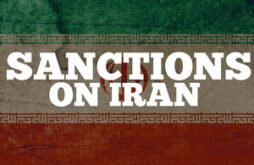Iranwire – Iran’s Supreme Leader Ali Khamenei has repeatedly referred to security threats in his speeches in recent years using phrases such as “infiltration” and “soft war”. By playing up the perception that the country is always under threat, he has been able to justify increased repression, detentions and general restrictions on everyday life in Iran. Seemingly in support of this, the latest issue of The National Security Quarterly, which is tied to the Supreme National Defense University, has published a list of 40 factors that its authors believe are a threat to Iran.

***
The scope and variety of threats against the Islamic Republic of Iran are growing exponentially – at least, according to the ruling clerical caste in Iran.Any decision, words or behavior can be considered a threat to national security by the intelligence, security and law enforcement agencies and lead to legal consequences for those found to be responsible.
Officials claim these threats are constantly evolving and increasing, which has led to comprehensive restrictions on all manner of everyday activities. In this situation the simplest actions can cause problems.
Regional, National and International Threats
The National Security Quarterly, which is affiliated to Iran’s Supreme National Defense University, has published a list of 40 factors in its latest issue which, according to the authors, pose regional, national or international threats to the Islamic Republic.
The article Typology of Hybrid Threats and its Application in the Islamic Republic of Iran is an attempt to categorize a variety of what it terms “hybrid threats”.The authors define hybrid threats as “the use of all political, intelligence, military, and economic elements by governmental or supranational actors to destabilize Iran”.
“The hybrid threat encompasses a range of different modes, including common capabilities, erratic strategies and indiscriminate violence coordinated by governments or supranational entities,” the article says.It identifies 41 such hybrid threats that have been discussed and evaluated by officials, of which 21 are defined as international, 11 as national and nine as regional. The article also says that Iran is struggling militarily with 16 threats, politically with 14, socially with 10 and economically with five.
Strategic gaps, the legitimization of US actions against Iran, delegitimization of Iran, internal instability, damage to internal integrity, infiltration, weakening of the system, turning popular demands into civil disobedience and creating insecurity are among the “threats” listed in the article.
The authors also include “hollowing out from within”, external pressure, the improvement of security for Iran’s supposed enemies, weakening of the so-called Axis of Resistance, the scattered distribution and erosion of cyber power, destruction of infrastructure, intelligence operations, continuous monitoring of events, crippling sanctions, consensus-building, coalition-building and isolation as threats. Others include the perception of Iran as a security issue, regional instability, the Greater Middle East Initiative, proxy warfare, depopulation, smart troops and the deployment of a US missile defense shield in the region.
The article’s authors say the “strategic gap” is the most significant internal threat to Iran. According to their definition, the “strategic gap” is an organized, purposeful attempt by non-state media to create division between the people and the officials of the Islamic Republic. “Delegitimization of Iran”, “internal destabilization” and “damaging Iran’s internal integrity” are named as the other important internal threats.
“Legitimization against Iran” is considered the most important international threat.Maximizing the capacity of organizations and international law to influence and legitimize US actions against Iran is described as “legitimization”.
A Constant State of War
In 2017 the Quarterly Journal of MilitaryManagement published a report on “hybrid warfare” in the world, and offered suggestions to Iranian officials for dealing with it.
The report suggested that Iranian authorities should eliminate the potential for the growth of “radicalism” in the country. It also suggested that “military organizations should be able to adapt their military structure to network warfare”.
The quarterly Future Defense Research also published a report on “hybrid wars” in 2016 and wrote that the armed forces of the Islamic Republic displayed numerous weaknesses against hybrid threats that needed to be addressed.
Military conflict is just one of the dimensions of “hybrid threats” that Iranian officials have paid attention to in recent years. More important to them, though, is the intangible and unusual impact of these threats on the Iranian people: impacts that have widened the nation-state divide and amplified discourses of “subversion”.
Officials believe that the “enemies” of the Islamic Republic in the “hybrid war” attack the “grey” areas of the system, where defenses are lowest.According to research byImamHossein University, which is affiliated to the Islamic Revolutionary Guard Corps, the most important tools used in such an attack are diplomacy, information and the economy, with the main objectives being to impose economic sanctions and delegitimize the regime.
The study says that hybrid warfare in the field of diplomacy “always leaves the door open for negotiations and, on the other hand, with a military and economic siege, leaves the opponent – here Iran – in ambiguity and confusion.”
It goes on to state: “This strategy emphasizes that, given the use of civilian tools such as diplomatic and economic methods, and the use of mass media, which directly addresses the target community, the possibility of recognition and unity to counter the opponent is difficult.”
According to the authors of this report, “The main battlefield in hybrid warfare is the mental space of the target population and decision-makers in the target community”.
These security perceptions of multiple major, complicated issues have been repeatedly expressed in the speeches of Supreme Leader Ali Khamenei, who regularly refers to “infiltration,” “soft warfare” and “misdirection“.The result of such a view of “war” and “threat” against the Islamic Republic has been a constant increase in repression, detentions and general restrictions on everyday life in Iran.
 Shabtabnews In this dark night, I have lost my way – Arise from a corner, oh you the star of guidance.
Shabtabnews In this dark night, I have lost my way – Arise from a corner, oh you the star of guidance.


